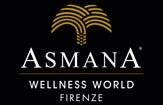Associated with the spa concept, hydrotherapy uses water movement, jets and steam as a method of healing and relaxation.
Water has regenerative powers for the body. Its ancient use is now seeing a new application in spas through hydrotherapy.
The Origin of Hydrotherapy
Even in prehistoric times, water was considered the simplest and most natural medicine. For this reason it was often juxtaposed with sacred elements. Hydrotherapy, which has since evolved to differentiate into various treatments (e.g., thalassotherapy, whirlpool, sauna and Turkish bath) was actually known as early as ancient Greece. It was then the Romans who created the concept of thermal baths. In fact, the word comes from the Latin Termae, which means "hot water."
Roman baths, in fact, did not use mineral-rich water as they do today, but took advantage of the benefits of hot water. Over time this practice has interested many scholars who have brought its benefits to light. One of the fathers of modern hydrotherapy is Sebastian Kneipp, creator of the famous Kneipp Path. He discovered that alternating baths at differentiated and appropriately set temperatures produces a very useful form of circulatory gymnastics at the level of blood vessels and muscle fasciae.
What is hydrotherapy?
By the terms hydro (water) and therapy (cure) we mean an emotional and wellness journey that aims to treat ailments of different kinds through the use of water. The latter can in fact have healing effects due to its chemical and physical characteristics.
The types of hydrotherapy
Hydrotherapy treatments include all types of baths, from soaking in typical bathtubs to swimming pools. These can be called either full baths, where the body is completely immersed in the water, or partial baths, such as foot baths, where only part of the body is in the water. In hydrotherapy, in addition to baths, water jets are also used. These water jets are directed on various areas of the body and help relieve muscle tension and increase blood circulation. The combination of general water pressure and increased pressure through the jet give great benefit, especially to the lymph nodes and connective tissues.
How water acts on the body and what are its benefits
The body's contact with water is capable of triggering a series of reactions, depending on the temperature and composition of the water itself.
- Cold water has an important vaso-constricting action. This means that immersion, by causing the narrowing of blood vessels, has positive effects on inflammatory states, thus allowing inflammation and congestion to be reduced.
- Finally,hot water or steam-as in the case of the steam bath-stimulates sweating and thus a purifying action (due to cell renewal that makes the skin soft and smooth) and relaxes the muscles.
- On the other hand, alternating hot and cold water is of great help in stimulating blood circulation. It would in fact constitute an exercise for the cardiovascular system by inducing dilation and narrowing of blood vessels.


